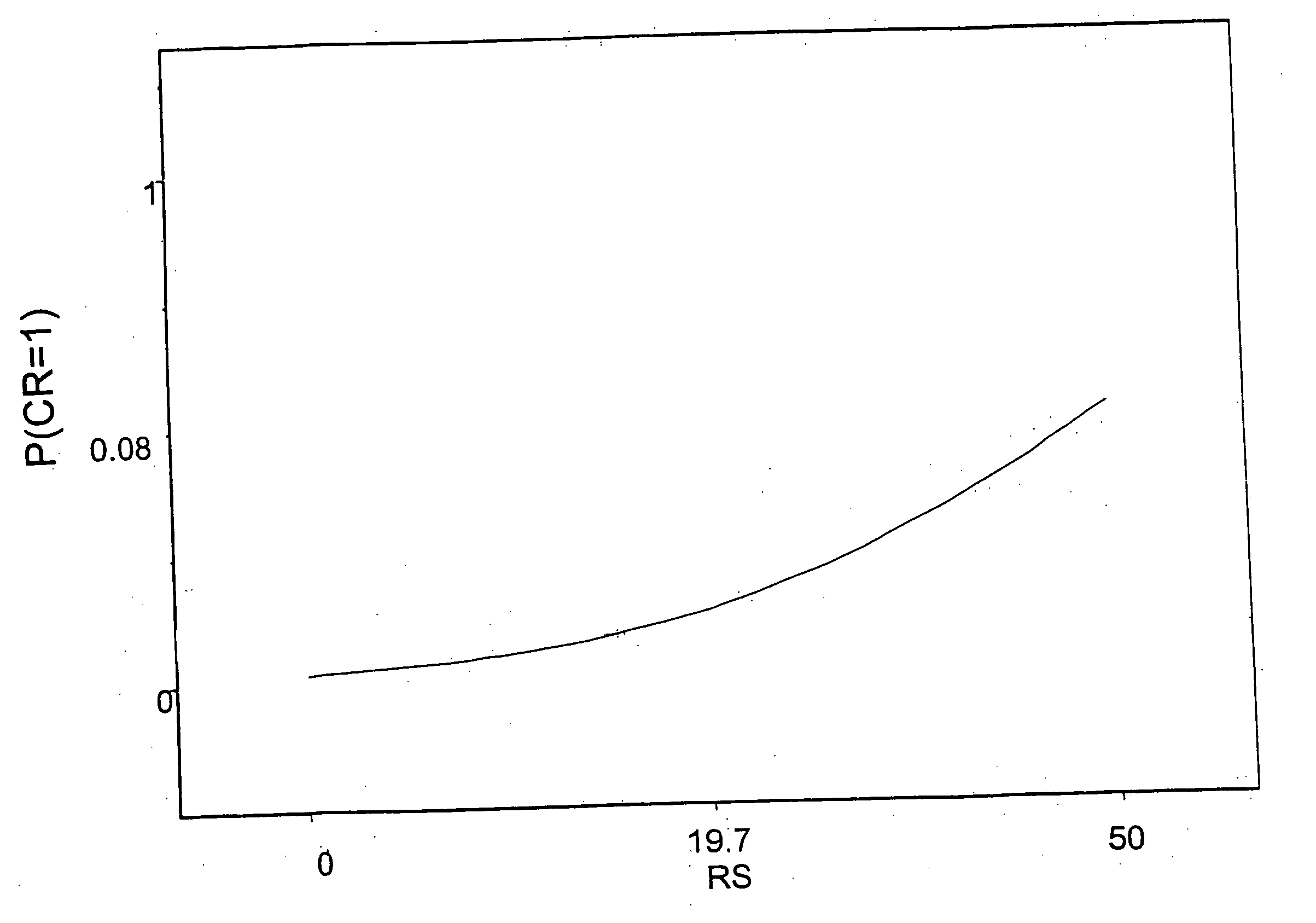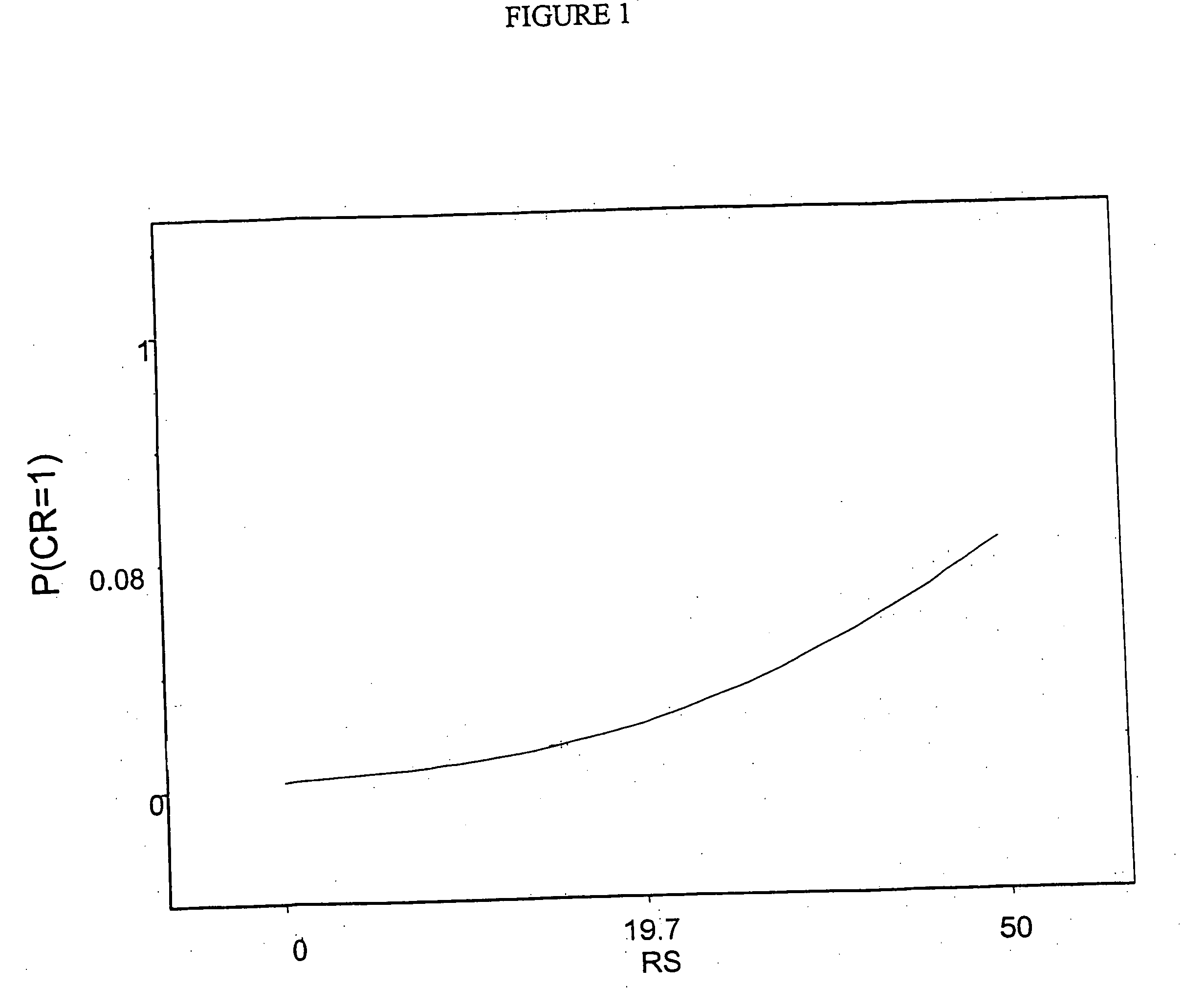Gene expression markers for predicting response to chemotherapy
a gene expression and gene technology, applied in the field of genes, can solve the problems of not accurately capturing the potential value of knowing relationships, diagnostic tests are often not quantitative, and rna-based tests are not often used
- Summary
- Abstract
- Description
- Claims
- Application Information
AI Technical Summary
Benefits of technology
Problems solved by technology
Method used
Image
Examples
example
A Retrospective Study of Neoadjuvant Chemotherapy in Invasive Breast Cancer: Gene Expression Profiling of Paraffin-Embedded Core Biopsy Tissue
[0147] This was a collaborative study involving Genomic Health, Inc., (Redwood City Calif.), and Institute Tumori, Milan, Italy. The primary objective of the study was to explore the correlation between pre-treatment molecular profiles and pathologic complete response (pCR) to neoadjuvant chemotherapy in locally advanced breast cancer.
[0148] Patient Inclusion Criteria:
[0149] Histologic diagnosis of invasive breast cancer (date of surgery 1998-2002); diagnosis of locally advanced breast cancer defined by skin infiltration and or N2 axillary status and or homolateral supraclavicular positive nodes; core biopsy, neoadjuvant chemotherapy and surgical resection performed at Istituto Nazionale Tumori, Milan; signed informed consent that the biological material obtained for histological diagnosis or diagnostic procedures would be used for research...
PUM
| Property | Measurement | Unit |
|---|---|---|
| Volume | aaaaa | aaaaa |
| Volume | aaaaa | aaaaa |
| Volume | aaaaa | aaaaa |
Abstract
Description
Claims
Application Information
 Login to View More
Login to View More - R&D
- Intellectual Property
- Life Sciences
- Materials
- Tech Scout
- Unparalleled Data Quality
- Higher Quality Content
- 60% Fewer Hallucinations
Browse by: Latest US Patents, China's latest patents, Technical Efficacy Thesaurus, Application Domain, Technology Topic, Popular Technical Reports.
© 2025 PatSnap. All rights reserved.Legal|Privacy policy|Modern Slavery Act Transparency Statement|Sitemap|About US| Contact US: help@patsnap.com



